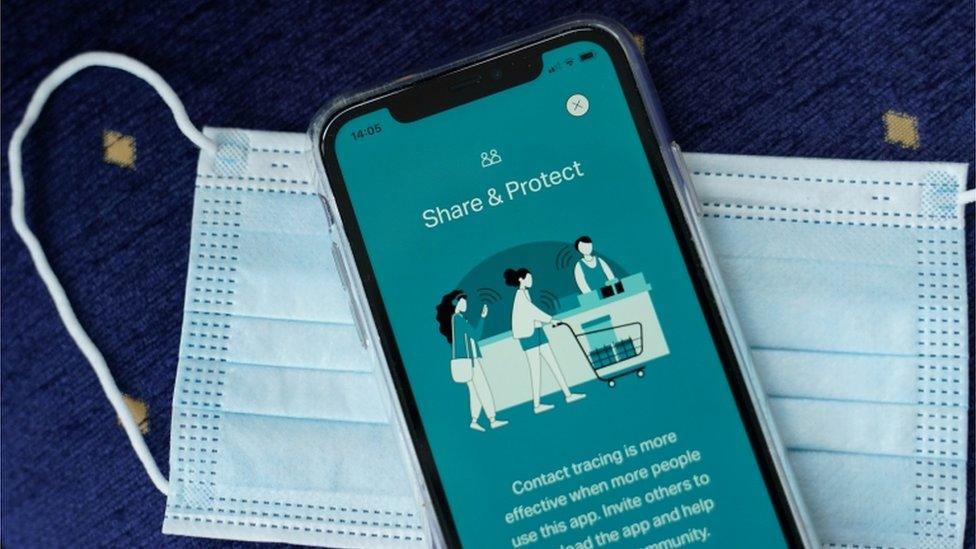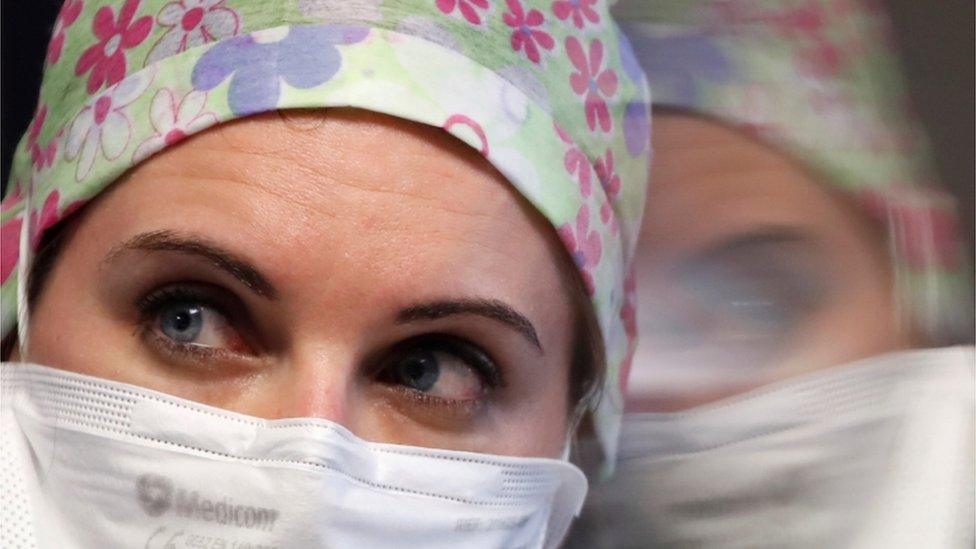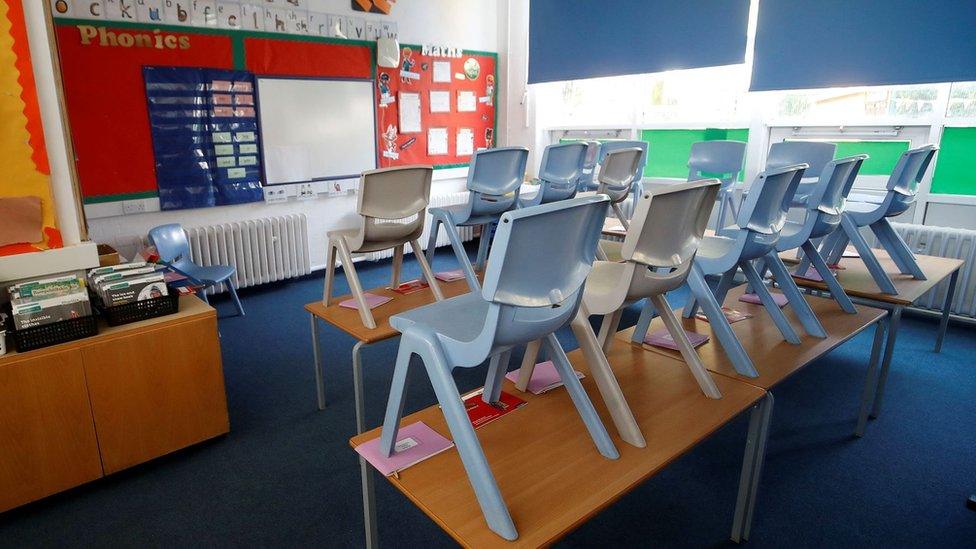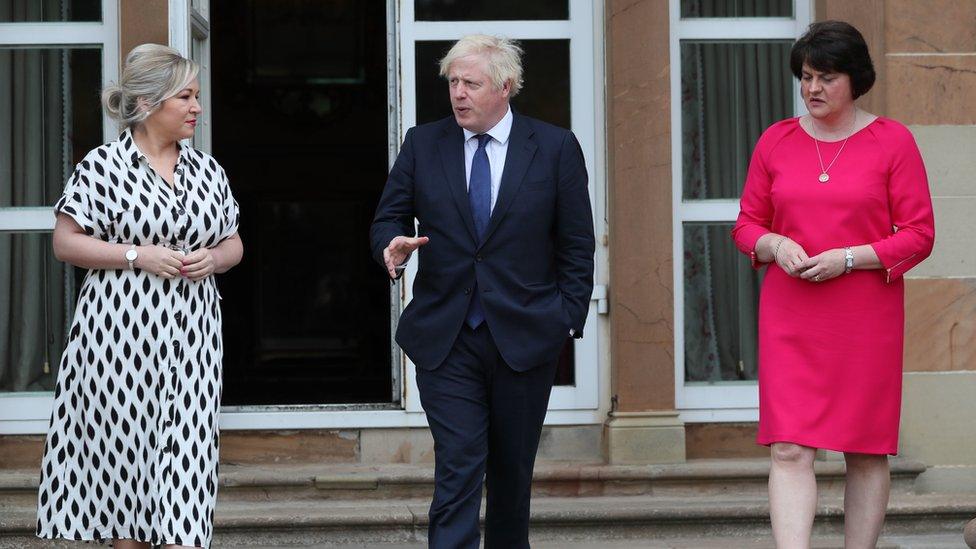Covid R number now likely to be about 1.6 in Northern Ireland
- Published
- comments

The StopCOVID NI app forms part of the virus tracing system
The latest Covid-19 reproduction number (R) in Northern Ireland has been estimated at between 1.2 and 2.0.
The Department of Health said this means R is likely to be about 1.6 at present.
R represents the number of individuals who, on average, will be infected by a single person with coronavirus.
It does not have a fixed value but varies with time, and is likely to be different every day.
The department also said the seven-day rolling average for new cases has more than doubled in the past week.

New figures from the Public Health Agency (PHA) show there have been 31 Covid-19 clusters so far in Northern Ireland since the start of contact tracing on 24 May.
A total of 11 clusters have been identified involving five or more people, while in addition there have been 20 clusters with fewer than five.
The PHA data identifies for the first time the number of clusters.
Council areas are also named, highlighting the areas affected:
Newry, Mourne and Down - four clusters
Mid and East Antrim - three clusters
Antrim and Newtownabbey - one cluster
Ards and North Down - one cluster
Armagh City, Banbridge and Craigavon - one cluster
Causeway Coast and Glens - one cluster
A cluster is defined as two or more laboratory-confirmed cases of Covid-19 among individuals, associated with a key setting and with illness occurring within 14 days.
The PHA said its contact tracing scheme was "continuing to engage successfully with the vast majority of identified contacts."
Since July, the average number of close contacts linked to cases has more than doubled.
It is thought the rise is due to the gradual easing of lockdown restrictions and also attitudes towards social distancing becoming more relaxed.
'An important reminder'
The head of health protection at the PHA, Gerry Waldron, said: "This is an important reminder that we must not become complacent - coronavirus remains in circulation, so each of us has a responsibility to take steps to help keep ourselves and those around us safe.
"Everyone should act on the basis that it might potentially be in your neighbourhood right now, rather than waiting for it to emerge in your local area or for rumours to circulate before taking steps to help protect yourself and others.
"That's why following the public health advice remains vitally important. You can spread the virus even if you don't have symptoms, so taking these steps and exercising good hygiene practices will help prevent cases and reduce the number of clusters.
"Our analysis of clusters to date has shown that they have been associated with both workplaces and in the community, such as domestic gatherings and in hospitality and sporting settings."

Over the past seven days the number of positive tests reported to the contact tracing scheme was 223 - the number of positive cases requiring contact tracing was 196.
There were 186 positive cases that completed contact tracing and in total 713 contacts identified. Of those, 695 were successfully contacted and advised.
According to separate data produced by the Department of Health, three care homes are currently affected by a Covid outbreak.
Residents in care homes who test positive are not included in the contact tracing data,. Those who test positive are followed up under separate health protection information.
The figures were updated at 17:00 BST on 12 August.
Dr Waldron added: "Clusters are managed through the contact tracing programme, and where we need to advise or inform the public of any increased risk to public health we will do so in a timely manner."
- Published13 August 2020

- Published13 August 2020
